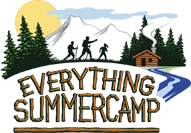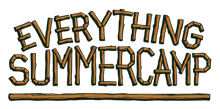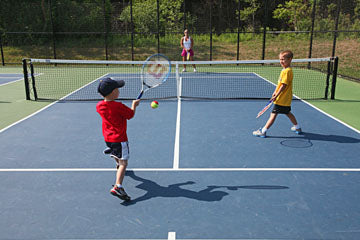Once Upon a Blog Post….
That’s not how I typically begin my posts for the Everything Summer Camp Blog, however, it’s the traditional beginning for those fantastical stories we dub Fairy Tales. Familiar from our childhood, the majority of Americans today likely got their introduction to Fairy Tales through the magic of painstaking animation of Disney’s first feature films (such as ‘Snow White’ which debuted in the theaters of 1937).
Snow White, however—based on an old German Fairy Tale called ‘Schneewittchen’—dates back much longer than 1937. Most Fairy Tales we know of nowadays can be traced back to stories from the Brothers Grimm. In the early 1800s, these two brothers, Jacob and Wilhelm Grimm, thought to write the stories down.
But they didn’t invent the stories either. The Grimm brothers were simply the first to try to preserve these oral tales that they had heard for all their lives. So if Jacob and Wilhelm didn’t come up with these stories, then who did?
The truth is that nobody really knows. Fairy Tales were passed down from generation to generation by mouth, subtly altered from storyteller to storyteller and substantially reworked by the time they were recorded in the written form.
Jacob and Wilhelm supposed that the Fairy Tales they were popularizing (such as ‘Red Riding Hood’, ‘Cinderella’, ‘Hansel and Gretel’, and ‘Snow White’ to name a few), had their origins in a shared cultural history that dated back to the dawn of Indo-European languages which appear to have origins as early as the 1st Century.
The Grimms suggested that other Fairy Tales that dealt with magic (such as ‘Beauty and the Beast’ or ‘Rumpelstiltskin’) are just as ancient with a written history that begins in the 17th Century and an oral history that has lasted millennia—between 2,500 and 6,000 years old! Stories that have existed for so long rival the lifespan of the wheel!
So the next time you enjoy an old Disney film or you’re read a Fairy Tale story before bed, remember that the story you’re taking in was first told during the Bronze Age. Storytelling makes us human. Respect it for the many yarns storytelling has spun, the many worlds it has created, and the ones that we hold dear in our hearts and have withstood the test of time. Treasure the stories you love and, as always, thanks for reading.
- John


 (which boasts 137 years of operation since it was first founded in 1881), have brought tennis competitions to the world over for years upon years. But the sport of Tennis certainly goes back much longer than any of these organizations do.
(which boasts 137 years of operation since it was first founded in 1881), have brought tennis competitions to the world over for years upon years. But the sport of Tennis certainly goes back much longer than any of these organizations do. f handling food without one’s hands. I’m talking about chopsticks, of course, as it only seems appropriate on National Chopsticks Day!
f handling food without one’s hands. I’m talking about chopsticks, of course, as it only seems appropriate on National Chopsticks Day! . But we still wanted to observe National Australia Day because of what a cool continent it is. And so, to recognize and honor this holiday, I compiled a small list of several interesting facts about this unique continent. Check it out.
. But we still wanted to observe National Australia Day because of what a cool continent it is. And so, to recognize and honor this holiday, I compiled a small list of several interesting facts about this unique continent. Check it out. contiguous 48 states of the U.S. and you’ll discover that Australia is a mere seven square kilometers smaller than the States.
contiguous 48 states of the U.S. and you’ll discover that Australia is a mere seven square kilometers smaller than the States. platypus, wallaby, and wombat. But, aside from zoos, these creatures don’t live anywhere else on the planet.
platypus, wallaby, and wombat. But, aside from zoos, these creatures don’t live anywhere else on the planet.
 Roo who was lost in the 30’s as well as Owl and Rabbit who were imagined solely for the books).
Roo who was lost in the 30’s as well as Owl and Rabbit who were imagined solely for the books).